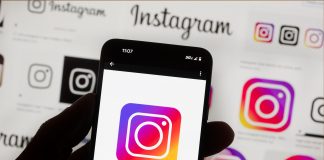There are many reasons why a microwave oven is among the staple appliances in kitchens. The first one is because it is very useful in reheating any food without making them soggier or oilier. It is also a highly durable machine, so it tends to last for a couple of years without getting damaged. And, if it gets broken, it can easily be fixed by an expert in appliance repair in Birmingham, Alabama.
Microwave ovens are also incredibly versatile. They can be used for various things, like the ones listed in this article. Read on to learn how to take advantage of the full potential of your microwave at home.
Contents
Sterilizing Sponges
Although a sponge is used to wash dishes, it is still among the kitchen’s dirtiest items. Because it is almost always wet, it becomes the perfect breeding ground for different types of bacteria, including E. coli and salmonella, which can cause various infections. It is advisable for homeowners to change their kitchen sponge at least once a week. But if you do not want to throw your sponge away, you can have it disinfected properly and regularly.
When it comes to disinfecting sponges, the perfect tool is right in the kitchen: the microwave. Just soak the sponge in a bowl of water with a bit of vinegar or lemon juice. Put the bowl into the microwave and heat it for two minutes. The acid in the vinegar or lemon juice will kill bacteria, while the water in the bowl will prevent the sponge from catching fire.
Making Citrus Fruits Juicier
Citrus fruits, such as oranges, lemons, and grapefruits, are among the best sources of vitamin C and other antioxidants. They are well-known for their sweet and sour taste, so they are often squeezed and served as juices. The problem is it’s hard to get even a glassful from these fruits when they have been stored inside the refrigerator for too long. The cold temperature causes the “juice capsules” in the fruit to firm up, making them hard to press.
A simple solution is to heat the fruits in the microwave for about 20 to 30 seconds. Doing this softens the capsules mentioned above, allowing the fluids in the fruits to flow better.
Dyeing Different Types of Fabric
Dyeing is a fun way to transform plain-colored clothes into something more vibrant. Many people love this DIY method because it is incredibly easy to pull off. The problem is the color can sometimes fade when the dye does not stick properly to the fabric. Using a microwave is a surefire way to solve this problem because the heat will effectively bond the dye to the material, preventing fading and discoloration. If you want to try it, you can follow this step-by-step guide:
- Prepare a container that is large enough to hold the whole garment.
- Fill the container with hot water, and then add the dye to it. Stir the mixture for a few seconds.
- Soak the piece of clothing into the mixture. Then, cover the container with plastic wrapping.
- Place the container inside the microwave and heat it for 30 seconds to 2 minutes, depending on the type of fabric. Wool and silk may require a longer heating period because of their weight and thickness. Nylon just needs 30 to 45 seconds since it is very sensitive to heat.
- Remove the container from the machine. Wait a few minutes for the plastic wrapping to cool down before peeling it off.
- Use a pair of tongs to remove the garment from the hot water. Immediately rinse it with cold water. Finally, hang the dyed piece of clothing to let it dry.
Although this is a fun and exciting thing to do, there are various things to consider before trying this craft. The microwave, for example, should be spacious enough to hold a large container. Also, the container should be microwaveable. If not, it will surely melt or break from the heat, and the water will spill and damage the microwave. If that happens, getting an appliance repair Birmingham Alabama will be necessary.
These are just a few ways to make the best out of your microwave. If you want to try these experiments for the first time, be sure to take extra precautions. Wear kitchen mittens to prevent your hands from getting burned, and do not overload your appliance to avoid any accidents.

























![How to Unlock Your Snapchat Account 2023 [Explained] Unlock Your Snapchat Account](https://geekblog.b-cdn.net/wp-content/uploads/2023/05/Unlock-Your-Snapchat-Account-324x160.jpg)

